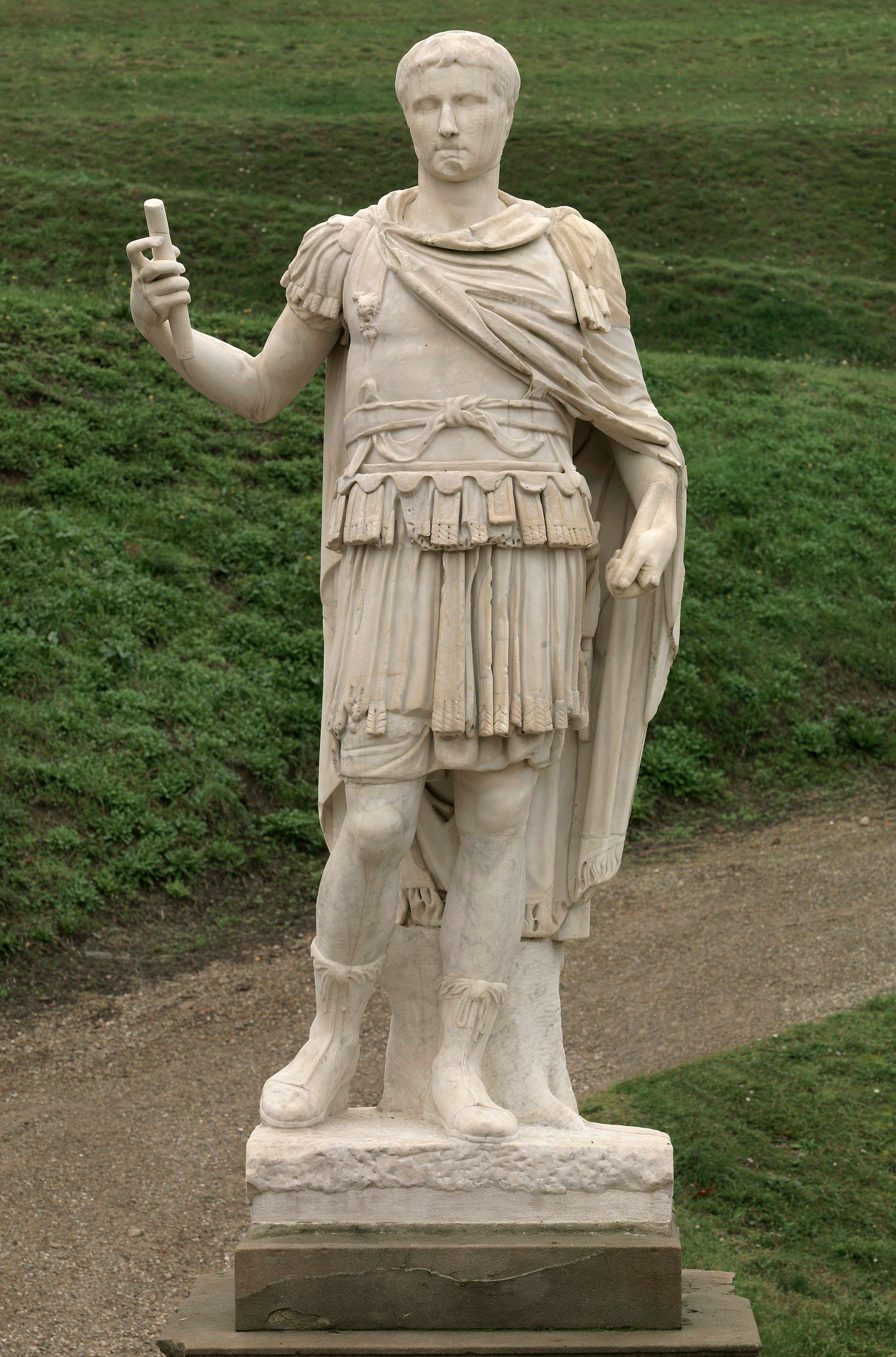Augustus
Roman art
The statue of Emperor Augustus was part of the collection of antiquities owned by Cardinal Della Valle and was purchased in 1584 by Cardinal Ferdinando de' Medici. Formerly at the Villa Medici, the sculpture was transferred to Florence at the end of the 18th century and, in 1789, was placed in the Boboli Gardens. Of the original sculpture remain the body and the head, which however is not pertinent. Due to the deterioration of the face, it is difficult to hypothesise on a date; however, the pattern of the locks that fall on the forehead suggests a precise resumption of the Prima Porta type, elaborated at the end of the 1st century b.C. The cuirass is characterised by a rectangular string (umeralium) ending with a lion's head, fixed to the chest with a ribbon tied to a leaf-shaped loop. Knotted at the lower abdomen we find the cingulum (the belt) and, a little lower down, a single row of semicircular pteryges (fringes above the skirt) from which two rows of fringed strips depart, one shorter, the other longer which, however, allows a glimpse of the tunic at mid-thigh.
B. Bargilli, D. Cappa, D. Rapino (a cura di), I restauri delle sculture di Boboli 2006 – 2009, Sillabe s.r.l., Livorno, 2010, pp. 46-49.
